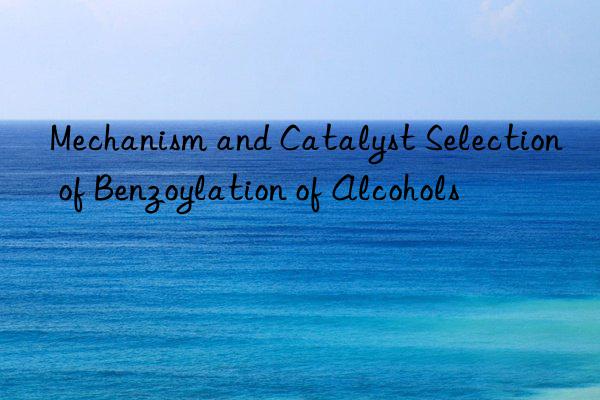
The benzoylation reaction of alcohols is a common organic synthesis transformation, which involves the conversion of the alcohol hydroxyl group into the corresponding benzoylation Derivatives, usually esters or ethers. This process is not only important as a means of protecting alcohol groups in organic synthesis, but is also one of the key steps in the synthesis of complex molecular structures. The benzoylation of alcohols is usually achieved by reacting the alcohol with benzoyl chloride or benzoic anhydride under basic conditions, a reaction called the Schotten-Baumann reaction.
Reaction mechanism
The benzoylation mechanism of alcohols is mainly divided into the following steps:
- Activation of benzoyl chloride: When benzoyl chloride reacts with alcohol under alkaline conditions, first the base (such as sodium hydroxide NaOH or potassium carbonate K2CO3) will neutralize the generated HCl, At the same time, benzoyl chloride is activated to form benzoyl oxygen anions that are more susceptible to nucleophilic attack.
- Nucleophilic attack: The oxygen atom in the alcohol molecule has a partial negative charge and is nucleophilic, and can attack the carbon atom on the activated benzoyl chloride or benzoic anhydride, thereby forming a The transition state of the tetrahedron.
- Elimination and Recombination: In the transition state, the hydroxyl proton of the alcohol molecule is removed by a base, forming a carbon-oxygen double bond and releasing a molecule of water. This process is also accompanied by a rearrangement between the benzoyl group and the carbon atoms of the alcohol molecule, forming an ester bond.
- Product formation: The alcohol is successfully converted into the corresponding benzoylated ester, with the release of by-products salt and water.
Catalyst selection
Catalysts play a key role in the benzoylation reaction of alcohols, not only speeding up the reaction but also improving yield and selectivity. Different catalysts are suitable for different reaction conditions and substrate types. Common catalysts include:
- Alkali catalysts: Such as NaOH, KOH, K2CO3, Et3N, etc., which can neutralize the generated HCl, activate benzoyl chloride, and promote nucleophilic attack.
- Organic bases: Like triethylamine (TEA), pyridine, dimethylaminopyridine (DMAP), etc., these organic bases can not only neutralize HCl, but can also further neutralize HCl through the electron donor effect. Activate benzoyl chloride and improve reaction efficiency.
- Metal salts: For example, aluminum trichloride (AlCl3), scandium triflate (Sc(OTf)3), etc., which can activate benzoic anhydride through Lewis acid properties and promote the reaction. conduct.
- Solid acid catalyst: Such as zeolites, montmorillonites, silica-supported metal oxides, etc. These catalysts can provide mild reaction conditions in some cases and reduce the occurrence of side reactions. .
The choice of catalyst often depends on the target product, reaction conditions and environmental factors. For example, for environmentally friendly synthetic routes, researchers may be tempted to use recyclable solid catalysts to reduce waste generation. In industrial production, more emphasis may be placed on the cost-effectiveness and reaction scale of the catalyst.
Conclusion
Benzoylation of alcohols is a versatile chemical tool widely used in drug synthesis, materials science, and the manufacture of fine chemicals. Understanding the reaction mechanism and rational selection of catalysts are the keys to achieving efficient, highly selective, and environmentally sustainable chemical transformations. With the popularization of the concept of green chemistry, the search for more environmentally friendly and efficient alcohol benzoylation catalysts is still an active research direction in the field of organic chemistry.
The above outlines the basic concepts of the benzoylation mechanism of alcohols and catalyst selection. In practical applications, it may be necessary to consider the optimization of various reaction parameters such as solvent, temperature, and pressure to achieve chemical conversion effects.
Extended reading:
T120 1185-81-5 di(dodecylthio) dibutyltin – Amine Catalysts (newtopchem.com)
DABCO 1027/foaming retarder – Amine Catalysts (newtopchem.com)
DBU – Amine Catalysts (newtopchem.com)
bismuth neodecanoate – morpholine
amine catalyst Dabco 8154 – BDMAEE
2-ethylhexanoic-acid-potassium-CAS-3164-85-0-Dabco-K-15.pdf (bdmaee.net)

 微信扫一扫打赏
微信扫一扫打赏

